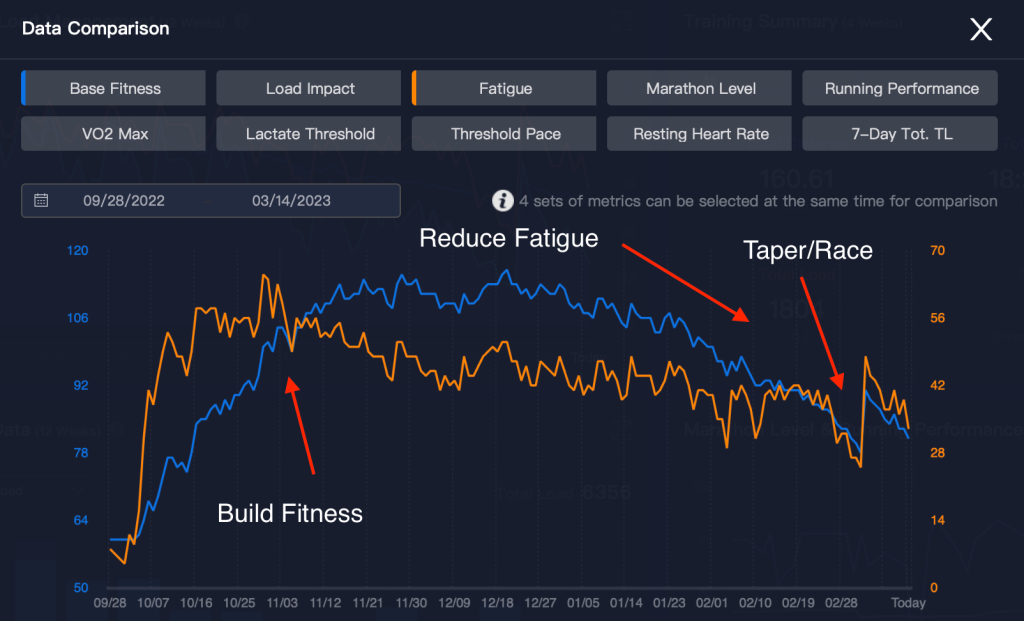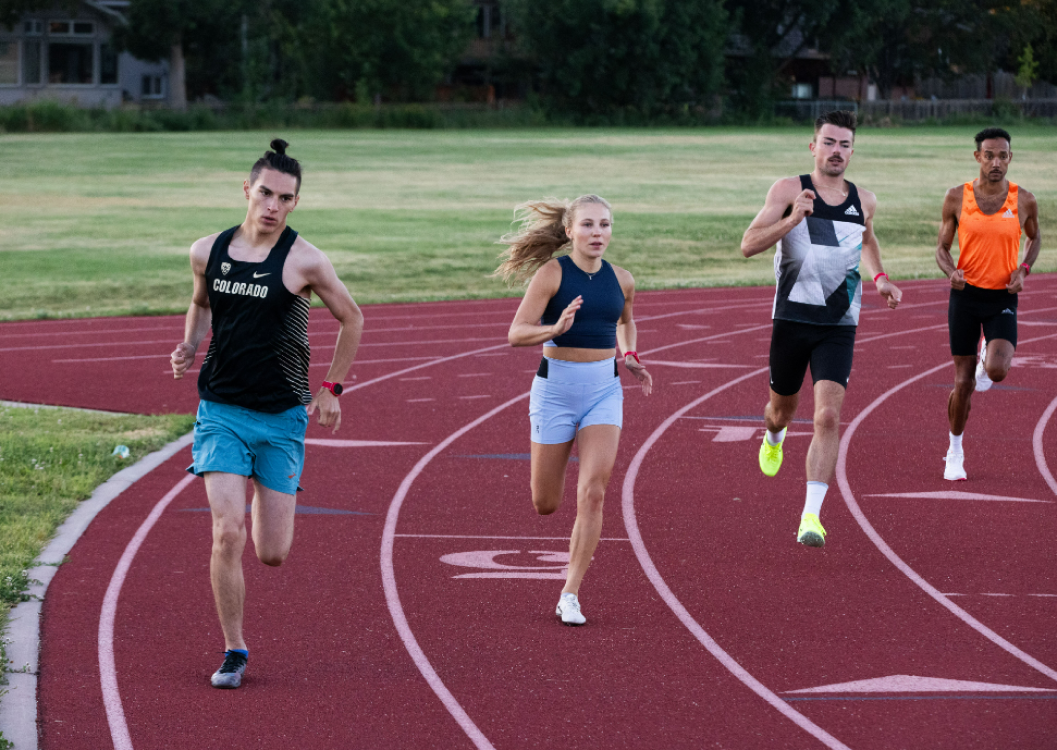As part of our new COROS Coaches service, we received a few questions regarding taper insights and how to best master this training component prior to race day. Below you will find our coaching insights on the matter as well as various ways to monitor it through EvoLab!
What Is A Taper?
A taper refers to the decrease in workload that runners may implement before a race to be best prepared with adequate recovery. Tapering remains a fine art combining training and recovery to reach the start line in your best competitive shape!

What To Do During A Taper?
There are several steps to follow during a taper to ensure a proper recovery without losing fitness. We have broken down tapering into 3 simple steps:
- Training Load. The main focus of a taper is to reduce the training load. This can be done by either decreasing your current volume and/or intensity. But you will see below that one may be better than the other.
- Volume. During the taper, volume is the element to decrease to roughly 50% of your current volume significantly. Doing so frees up time to implement recovery habits such as nutrition, sleep, and others.
- Intensity. On the other hand, workout intensities during taper should become very similar to the race demands. Depending on what you were working on before tapering, you may have to increase/reduce your intensity to meet the race demands as much as possible.
How Long Should A Taper Last?
The answer will depend on your capabilities as well as the race characteristics. Some people will require 3-4 weeks of gradual decrease while some may perform well with only a week. A great rule of thumb however is the longer the race the longer the taper should be.
 A progressive decrease in weekly training load during taper prior to Boston Marathon.
A progressive decrease in weekly training load during taper prior to Boston Marathon.
EvoLab Analysis
As you train with your COROS watch, you can access multiple graphs within Training Hub. Some of them can greatly help monitor your training and ensure you are recovering enough during tapering. We have inserted three different graphs in this blog that all play a role in your taper monitoring.
Base Fitness & Fatigue
Once again, the Training Load Management Chart is your bread and butter for most training monitoring.
- Fatigue. Aim to bring your Fatigue value down to roughly 20-40 during taper for optimized recovery.
- Base Fitness. Aim to bring your Base Fitness score down by roughly 5-10% during taper. For example, if you have built up your Base Fitness to 100 during training, aim to get to race day at a Base Fitness of about 90.
Is It Normal To See Base Fitness Decrease During A Taper?
Absolutely! Base Fitness is your long-term stress score. Therefore, it is normal and even recommended to see decrease slightly during tapering as it would prove that your body is in a recovery process.
 An ideal tapering strategy is done by an athlete before LA & Boston Marathons to ensure proper recovery.
An ideal tapering strategy is done by an athlete before LA & Boston Marathons to ensure proper recovery.
Weekly Training Load
As mentioned before, training load is the main focus of tapering. The Weekly Training Load Chart shown above is a great indicator of how much work you put in before and during tapering.
Aim to bring down your weekly TL score to roughly 50%. For example, the athlete below shows a weekly training load of ~700 compared to nearly ~1200 during their build-up.
 Reduction in weekly training load during tapering prior to Boston Marathon.
Reduction in weekly training load during tapering prior to Boston Marathon.
Pace Zones Distribution
Another helpful EvoLab graph is your Pace Zones Distribution. As mentioned earlier, it is important to maintain specific intensities during taper and pace zones can tell you exactly if you are following your intensity goals.
Aim to increase your training load spent at the zone(s) you will be racing at. For example, if you were completing
speed workouts before tapering for a marathon, you may have to reduce intensity. In contrast, if you were focusing
on easy long runs, you may have to increase intensity. By following this concept, you can focus on your marathon
pace and meet the demands of the race while recovering.
The graphs below show an increase in zone 2 during tapering for Boston Marathon, a race completed mostly within zone 2 (Aerobic Power).

More Questions?
If you want your training questions answered, email us at coach@coros.com, and we’ll gladly share insights!






